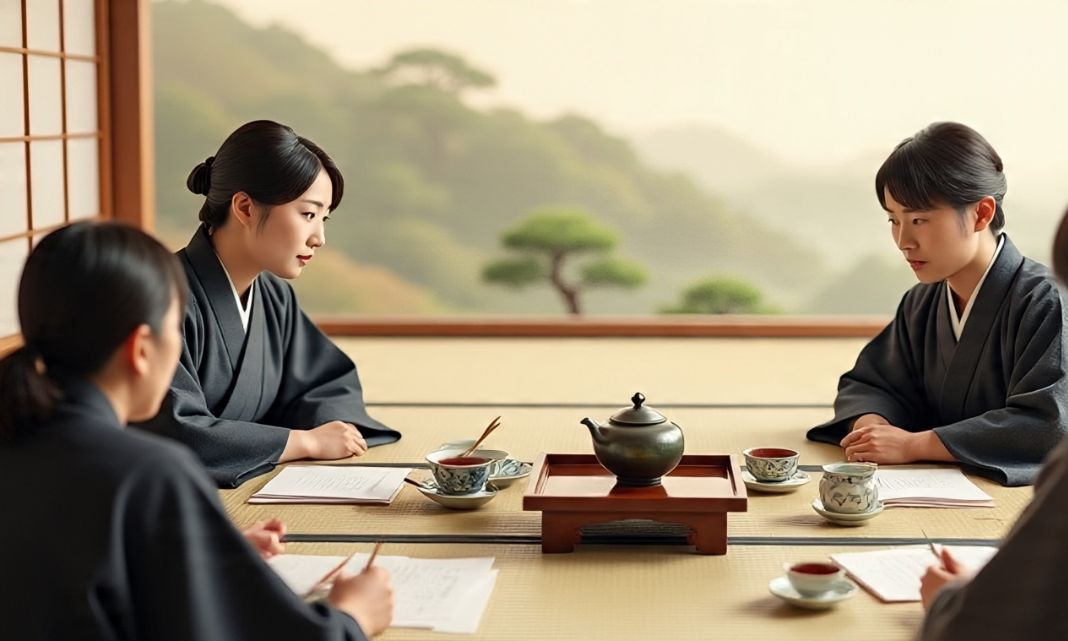The Japanese word Jyokyo (状況) is usually translated as “situation” or “circumstance.” But its meaning extends far beyond a simple dictionary definition. In Japanese culture, Jyokyo reflects an awareness of the visible and invisible factors shaping each moment. In today’s fast-paced world, this concept resonates deeply with those seeking mindfulness, clarity, and intentional living.
Understanding Jyokyo gives us more than language knowledge—it provides a framework for how to respond wisely to life’s challenges and opportunities.
What Does Jyokyo Mean?
Jyokyo is formed from two kanji:
- 状 (jou): state or condition
- 況 (kyo): situation or circumstance
Together, they describe not just what is happening, but also how it is happening—the quality, context, and emotions surrounding an event. For example:
- 現在の状況 (genzai no jyokyo): the current situation
- 複雑な状況 (fukuzatsu na jyokyo): a complex situation
Unlike the English word “situation,” Jyokyo emphasizes nuance. It’s about reading between the lines and paying attention to unspoken cues.
Jyokyo and Japanese Cultural Values
To grasp Jyokyo, you need to understand its cultural roots. In Japan, communication is often indirect, guided by context rather than explicit words. Expressions like “kuuki wo yomu” (空気を読む)—“reading the air”—capture this mindset.
Jyokyo represents the same principle: being sensitive to the environment, adjusting behavior, and maintaining harmony. For instance, instead of blaming someone directly, a person might say:
-
状況によって (jyokyo ni yotte): “because of the situation”
This subtle phrasing softens conflict, preserves relationships, and shows emotional intelligence.
Jyokyo in Business and Professional Life
In formal settings, Jyokyo becomes a strategic tool. Businesses and politicians often refer to Jyokyo when explaining decisions or policies. Examples include:
- 経営の状況 (keiei no jyokyo): business conditions
- 市場の状況 (shijou no jyokyo): market situation
- 緊急状況 (kinkyuu jyokyo): emergency situation
Using Jyokyo communicates adaptability and responsibility. It frames actions as thoughtful responses to circumstances rather than arbitrary choices—something leaders worldwide can learn from.
Jyokyo in Daily Conversations
Outside of formal settings, Jyokyo appears in casual exchanges. Friends may ask:
-
最近の状況は? (saikin no jyokyo wa?): “How’s the situation lately?”
This open-ended phrasing allows for flexible interpretation—it could mean work, health, family, or feelings. The listener fills in the context.
Here, Jyokyo acts as a gentle, non-intrusive way to check in with others, reflecting Japan’s value of amae (mutual care and trust).
Jyokyo as a Mindfulness Practice
Beyond language, Jyokyo can be seen as a way of living. It encourages people to pause, observe their environment, and respond with awareness rather than impulse.
This mirrors global mindfulness practices like meditation and stoicism. By applying Jyokyo, you learn to:
- Notice external and internal conditions
- Avoid knee-jerk reactions
- Align responses with the present moment
In this sense, Jyokyo is not just cultural—it’s universal. Anyone can adopt it to reduce stress, improve relationships, and live more intentionally.
Real-Life Stories of Jyokyo
- A Tokyo professional shared that using Jyokyo during tense meetings helped her adapt calmly and resolve conflicts without tension.
- An American student used “Jyokyo journaling” to reflect on daily challenges, gaining clarity and better decision-making.
- A yoga teacher in Bali integrated Jyokyo into breathwork, helping students flow with awareness instead of judgment.
These examples show that Jyokyo is not abstract—it’s practical, flexible, and transformative.
Misconceptions About Jyokyo
Some people misunderstand Jyokyo. Common myths include:
- “It’s just a Japanese word.” In reality, it’s a deep cultural and philosophical tool.
- “It means avoiding action.” On the contrary, Jyokyo teaches wise action based on awareness.
- “It’s only relevant in Japan.” Its principles of situational intelligence apply anywhere in the world.
How to Practice Jyokyo in Daily Life?
You can begin living with Jyokyo today by:
- Pausing before reacting. Ask: What’s the situation right now?
- Observing context. Who’s present? What emotions or energies exist?
- Reflecting daily. Keep a journal of your Jyokyo and how you responded.
- Checking the atmosphere. In conversations, read the tone and adjust gently.
- Using mindfulness tools. Breathwork, meditation, or quiet reflection help sharpen situational awareness.
Over time, Jyokyo becomes a natural compass guiding better choices.
Jyokyo in the Digital Age
Interestingly, Jyokyo has entered online spaces. Social media communities use hashtags like #Today’sJyokyo to share reflections. Apps help users track their emotional Jyokyo, combining mindfulness with technology.
For younger generations, it offers relief from productivity pressure—an invitation to “be where you are” before moving forward.
Conclusion: A Global Mindfulness Movement?
Jyokyo is more than a translation—it’s a worldview. It teaches us that every decision is shaped by context, and that awareness leads to wiser, more compassionate choices.
As mindfulness gains global attention, Jyokyo stands out as a bridge between culture, language, and universal human values. By embracing Jyokyo, you learn not just to survive situations, but to thrive in them.
FAQs About Jyokyo
1. What does Jyokyo mean in Japanese?
It means “situation” or “circumstance,” but with deeper emphasis on context and quality.
2. Is Jyokyo used only in Japan?
No, while it’s Japanese in origin, its philosophy of situational awareness is globally applicable.
3. How do Japanese people use Jyokyo daily?
They use it in conversations, business, and formal communication to describe conditions and adapt responses.
4. Can Jyokyo improve mindfulness?
Yes, it encourages observing before reacting, reducing stress and improving balance.
5. How can I practice Jyokyo in my own life?
Start by pausing, noticing your situation, and journaling daily reflections.

